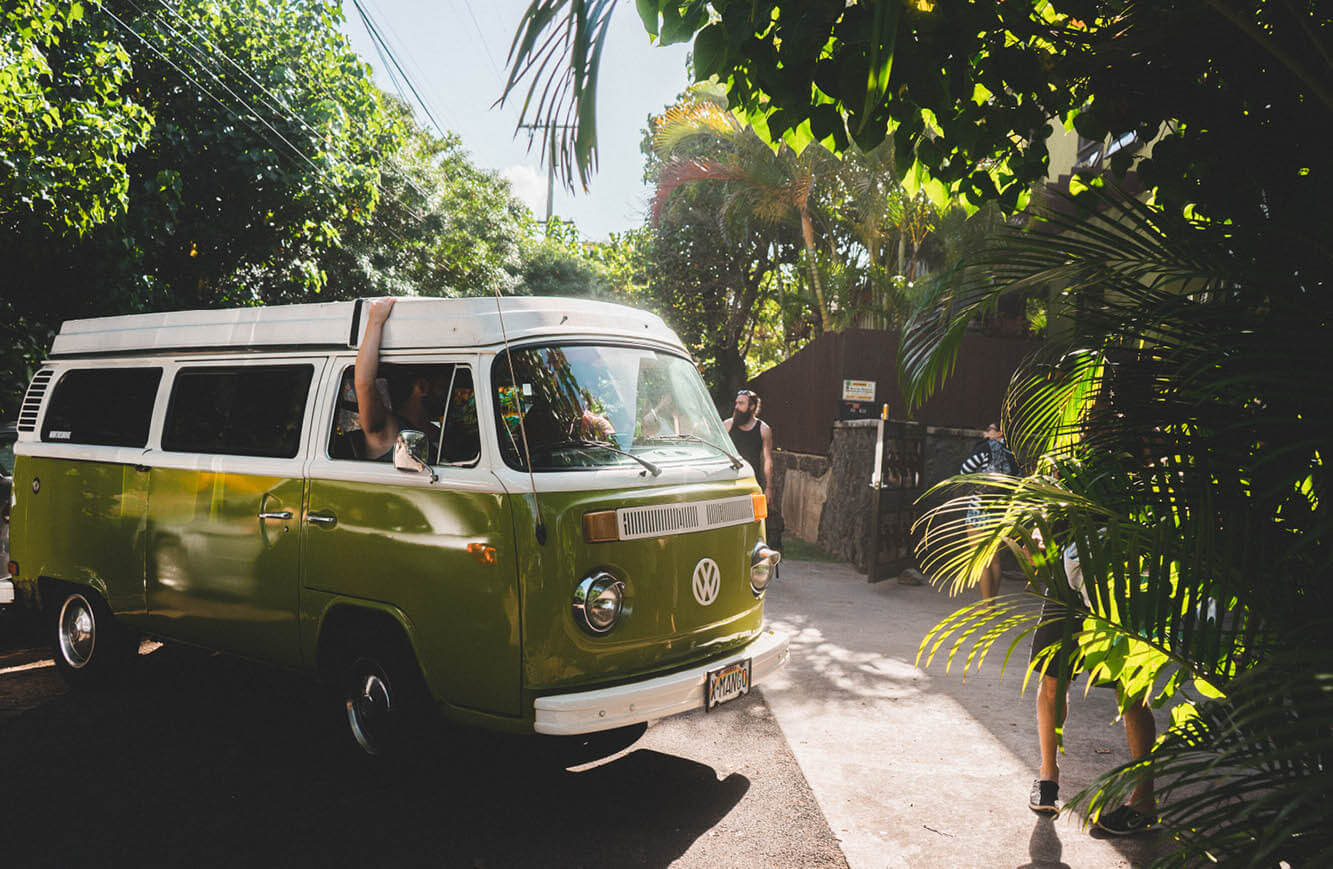The Short History Of Kombis
Share
The unlikeliest things become icons. The ballpoint pen, the safety pin, the Swiss Army knife… and an unreliable and frankly dangerous German-designed people-mover that looks like a loaf of bread on wheels.
Formally known as the Volkswagen Type 2, (full translation: Kombinationskraftwagen, or “combination motor vehicle”), the Kombi van goes by dozens of aliases, built up around its roles in millions of lives. The Germans themselves call them “VW-Buses”. In Peru, the nickname Combi Asesina translates as Deadly Combi, in recognition of the notoriously ruthless traffic tactics of the city bus drivers. In Portugal the term Pão-de-Forma is a reference to that unsexy breadloaf bodyshape. For Australians “Kombi” has remained essential – what else would Colin Hay have rhymed with “zombie”?
The Kombi is an enigma, both culturally and mechanically. It’s a van, but built on the same chassis as the Beetle. It’s quintessentially German and yet international: in particular a ubiquitous part of Latin American life, from Mexico City to Rio. The design dates from 1950, and a Dutch inventor named Ben Pon. You can see where the engineering minimalism came from. Entire name. Six letters. Remarkable.
Kombis started out with split windscreens, the aim being to create a slight vee to improve their atrocious aerodynamics. By 1962 there were ute versions, although of course the word “ute” is not an automotive reference when talking to Germans, but rather the name of their favourite cabaret singer, Ute Lemper, who wasn’t even born until 1963.
The technical breakthrough in the Kombi’s design, which seems entirely commonplace today, was placing the driver forward of the front axle. This had the added advantage of putting the humans further away from the clamorous dack-dack of the air-cooled flat-four engine down the back.
Everybody had a go at ripping off the concept, from the Ford Econoline in the US to the Renault Estafette in France and the Japanese Toyota Liteace. Meanwhile, Kombi conversions were available for everything from refrigerated vans to hearses, ambulances, police vans, fire engines (look them up – they’re ridiculously cute) and camper vans. A US model called the Samba had no fewer than 23 windows. One such vehicle recently sold for an astonishing $202,000.
Kombis over-steer because of their heavy arse-end. They have no crumple zone whatsoever: a carpark head-on with a shopping trolley at 8kmh will break both the driver’s kneecaps. It goes without saying there are no airbags, ABS or even noise reduction. The Kombi’s best safety feature is its complete lack of power – you just can’t hoon in em.
The dash is s study in minimalism. So are the seats: the sweet little baby boomers re-living Woodstock on the A1 at 50 in a hundred zone are stopping every 40 minutes to drop anti-inflammatories for their pounded backsides. The heater smells bizarrely of petrol. The early models might be the coolest, but they’re also the hottest – there’s no air-con.
If I sound derogatory here, there’s a thing about Kombi people that needs to be understood: just like owners of borzois and NRA members, the more shit goes wrong, the more they double down on the loyalty.
Celebrity owners of Kombis include Jack Nicholson, Jamie Oliver and Jerry Seinfeld, but statistics show that 83% of Kombis are owned by PhD candidates in their seventeenth year of study, who wear organic hemp undies and list their primary recreational interest as “developments in the recovery of non-background steel”. It is a specie of cool, but one that’s not readily recognisable.
Remarkably, the Germans themselves stopped making Kombis in 1967. By then, they were built all over the world, including in Melbourne, Australia, where optional extras included a kale basket and a colourway called “Gaggia Espresso Chrome”.
That deep, goofy smile that Kombis cause in all of us has made them the top-selling cliché of every gift shoppe in the nation: little tin ones as knick-knacks, usually with two patently unsurfable surfboards glued to the roof.
In 2006 the Brazilians toughened their emissions laws, which resulted in them making Kombis that could run on alcohol. By this they did not mean caipirinhas: a sub-industry developed around of getting the lime peels out of the carbies. The very last Type 2 rolled off the production line in Brazil in 2013. By then, every other auto-making nation on earth had banned production of Kombis for safety reasons. Air bags and anti-lock braking were sadly a bridge too far.
I once sat in a rain-swept carpark at a Phillip Island beach and watched a bunch of mates drinking around a campfire…inside their Kombi. This is probably not ideal, but it does reinforce the point: there’s happiness to be found in these daggy machines.
The Vissla Sydney Surf Pro is on from 26 February until 4 March at Manly Beach.

The Vissla Sydney Surf Pro will also host a number of off-beach events and festivities that will be centralised around the Corso area including the 2018 VW Kombi Rally.
